SAN ANTONIO (Day 4 - part 3)
We then set out to explore the missions.
The San Antonio Missions National Historical Park was established in 1978 and includes four Spanish Colonial-era missions and other historic features within its 475-acre boundaries. Although part of the mission complex, Mission San Antonio de Valero (the Alamo) is excluded since it's owned by the State of Texas.

Why are the missions so close together? Apparently not all the local tribes got along with each other, so different missions often served different groups.
The largest is Mission San Jose, founded in 1720. The other three were originally founded in East Texas but transferred here in 1731. The main purpose of the missions was to convert Native American groups to Christianity and assimilate them into Spanish society (as tax-paying subjects of the King of Spain), giving this area a unique culture.
Why would the locals accept this? After all, they were expected to give up their own religion, culture, language (having to learn both Spanish and Latin), traditions and sometimes even their own name. But, the missions offered the opportunity to learn new skills such as farming, ranching, quarrying, masonry, carpentry, weaving, as well as irrigation and kiln building. These people had been mostly lived as hunters and gatherers before, where survival depended on the mercy of the elements. The missions granted them protection from enemies (raiding Apaches and Comanches) by means of stone walls and larger numbers. Most of them had only existed in small scattered groups before.
Each mission was a community comprised of a fortified village, a church, farm and ranch. Orchards of peach tress and fields of beans, corn, melons, sugar cane, cotton, chilies and squash were irrigated by acequias (irrigation ditches).

The toll of the tower bells set the daily schedule for mission residents.


The missions also introduced them to European practices, such as selecting godparents, whether they were blood relations or not. This connected the larger community through a shared responsibility for its members, creating trust for a larger, united group. Everyone had a role and the tribe leaders were given positions such as governor, judge or sheriff of the new communities. In spite of all this, the locals were often hit with epidemics of smallpox, measles and other European diseases.
By 1824, the mission era had come to an end (due to a lack of new converts as well as political turmoil within the Spanish empire) and over time the buildings began falling into various states of disrepair.
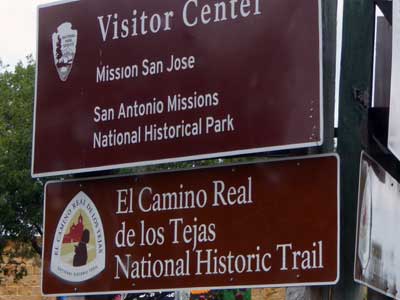

The Mission Road linked these missions with each other and with the Camino Real, which connected the rest of the Spanish settlements in Texas and Mexico.
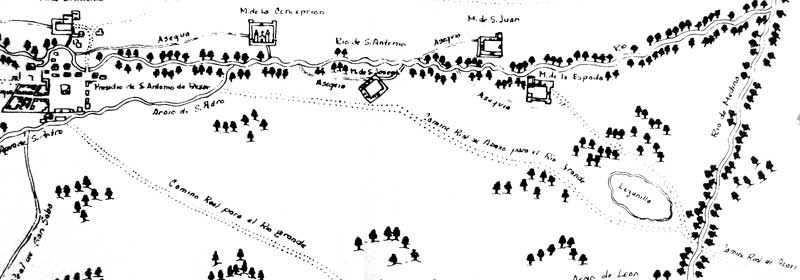
The city of San Antonio is on the far left, with the missions following the road to the right of it
Our first stop was Mission San Jose, or more properly... Mission San Jose y San Miguel de Aguayo. It was founded in 1720 by the Spanish Franciscan missionary Father Antonio Margil de Jesus (1657 - 1726). Originally founded on the east bank of the San Antonio River, it was relocated three times and moved to its current location on the west side of the river at some point before 1730.
It's named after St. Joseph/San Jose and the second Marques of San Miguel de Aguayo, José de Azlor y Virto de Vera... yup, the same guy from the governor's palace. He granted Father Margil the permission to start this mission.

Jose de Azlor, governor of Spanish Texas (Coahuila and Texas)
The earliest Native American groups to occupy the mission were the Pampopa, Pastia and Sulujam. The population fluctuated greatly. At the start of the mission, there were some 240 individuals residing here, but in 1739 a deadly epidemic dropped their population to a mere 41. At its peak, their numbers reached over 300.
Originally the compound was an open pueblo filled with artisan workshops (blacksmith, carpentry, weaving). In the 1740s, a stone friary was added. Eventually there was also a granary and gristmill. Construction of the church and protective walls began in 1768.
The mission was partially secularized in 1794 and its lands were divided into lots and given to the remaining Native American residents. The church offered services until it was closed in 1824. Over the following decades, it was briefly occupied by Mexican and later Texian military units. The church was briefly reopened from 1859 to 1868 until a portion of the north wall, dome and roof collapsed during storms.
In 1928, the church’s bell tower collapsed and people recognized the mission's need for care. Preservation work began in 1932, mostly through New Deal programs such as the Works Progress Administration and Civil Works Administration. It is now the most complete of the local missions.


Mission San Jose y San Miguel de Aguayo ... approaching the south entrance next to the corner bastion
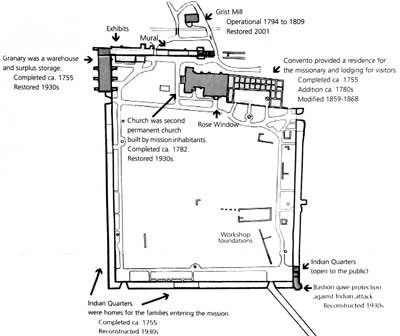
A map of the current grounds (click for a larger view)

An illustration of back in the day (click for a larger view)
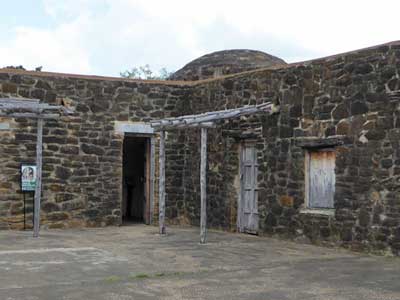

The bastion, outside ... and inside


The expansive inner complex ... rows of Indian quarters along the east wall

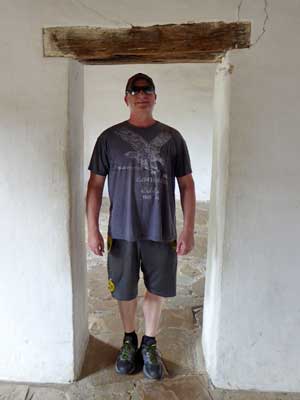
Inside

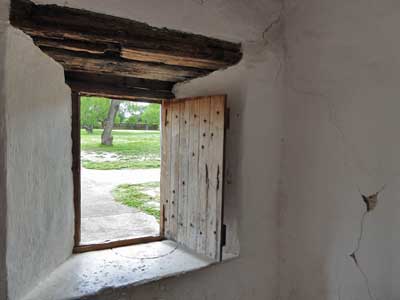


An old oven ... and the east gate


Just beyond the gate were the current parish offices. We only briefly peeked in.


Fray Antonio Margil de Jesus, founder of this mission and the patron saint of Texas

The church and convento




These walls used to be ornately painted.

The convento was the housing for missionaries and assistants. In 1785, it had 9 rooms downstairs and 5 upstairs and was covered by a flat roof. A major reconstruction was begun by Benedictine monks in 1861 but never completed.

A cut-away glimpse of how it used to be inside


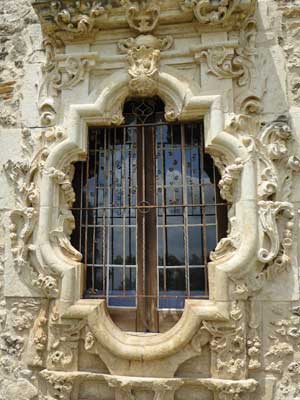

The sculptor of the 'rose window' remains a mystery. Some credit it to Pedro Huizar, a carpenter from Spain, who carved it for his sweetheart, Rosa, who was lost at sea on her way to join him. Others say it is named after St. Rose of Lima, the first saint of the New World. Either way, it is so lavishly carved that it must have served as a portal during important events... but even about this, records remain silent.


A tiny side tower ... and a glimpse inside

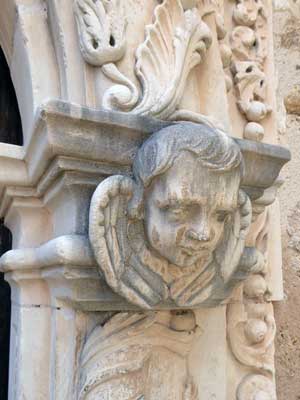
Entering the church via the convento
return • continue